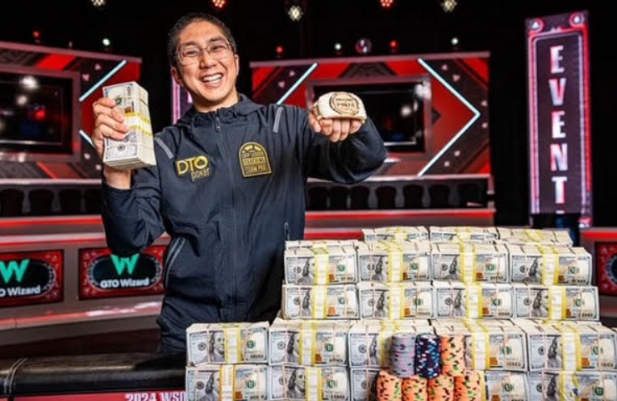
The final table. The culmination of hours of strategic play, a chance at poker glory and a hefty payday. But with pay structures so top heavy, playing with less than a full table and other dynamics, the atmosphere shifts dramatically compared to earlier stages in the tournament.
Here’s how to adjust your strategy, exploit the dynamic, and maximize your chances of taking home the trophy:
Knowing Your Goal: Winning vs. Biggest Payout
Before diving into specific strategies, it’s crucial to define your final table goal. Are you playing to maximize your chances of winning the tournament and therefore taking more aggressive lines that could lead to busting earlier? Or are you wanting to play more conservative, avoid busting and playing to maximize your payday?
Winning the Tournament: Focus on building a strong chip stack early by playing more aggressively against weak opponents and utilizing ICM to your advantage. Take advantage of 3 betting/re-steal opportunities when in position and when the original raiser is likely weak or playing too aggressively.
Getting the Largest Payout: This strategy prioritizes maximizing potential payout, even if it doesn’t guarantee first place. Play cautiously with short stacks while focusing on ICM calculations. Get out of the way in questionable spots by limiting playing pots out of position and limiting your 3 bets to only premium hands.
Shifting Gears: Adapting Your Approach for the Final Table
Emphasis on ICM: Independent Chip Model (ICM) becomes paramount. While accumulating chips is still important, considering payout structure and potential survival becomes crucial. Tightening up and playing for survival might be necessary with a smaller stack.
Focus on Exploiting Weaknesses: With fewer players, observing tendencies becomes easier. Look for tells, betting patterns, and exploitable leaks in your opponents’ games. Where are the weak spots at the table? Who is inexperienced and more likely to make a costly mistake?
Want to research your final table opponents and find the fish? TABLE SPY is a FREE tool that does all of your day 2 research for you. Simply copy and paste your table assignment into the free tool, and within seconds, get comprehensive player data that once took hours to find.
Shorter Stacks, Bigger Decisions: Decisions with short stacks carry more weight. Shoving ranges tighten as the cost of calling a big bet increases. Analyze ICM implications before committing your chips. Utilize the “push/fold” strategy with short stacks, maximizing fold equity when all-in.
Be Aware of Your Image: How do your final table opponents perceive you? Have you been aggressive throughout? Maintain that image to pick up smaller pots with well-timed bets. Tight players might benefit from surprising opponents with a well-timed re-steal opportunity.
Adjusting Play Based on Stack Sizes and Styles
Big Stacks (Chip Leader): Exert pressure with calculated aggression. Utilize continuation bets and isolate weaker players. However, don’t over-bluff, as the cost of losing a big pot increases.
Medium Stacks: Maintain a balanced approach. Play tight when blinds are high and loosen up when ICM dictates. Utilize position to your advantage, stealing blinds from short stacks and putting pressure on tight players.
Short Stacks: Navigate the high-pressure zone cautiously. Analyze ICM implications before entering pots. Utilize the “push/fold” strategy, shoving all-in with strong hands and folding to large bets. Prioritize survival and preserve chips!
Common Final Table Mistakes (and How to Avoid Them):
Playing Too Tight: While caution is vital, folding too frequently can surrender valuable chips early on. Balance your play with well-timed bluffs and aggression.
Ignoring ICM: Focusing solely on accumulating chips can be detrimental. Analyze the payout structure and adjust your play for survival.
Letting Emotions Cloud Judgment: The thrill of the final table can lead to rash decisions. Stick to your strategy, utilize logic, and avoid emotional plays.
Underestimating Short Stacks: Short stacks pose a threat. Their all-in shoves can cripple your chip stack. Respect their aggression and acknowledge their potential for survival.
Not Adjusting to Play Styles: Playing the same way against all opponents is a recipe for disaster. Adapt your strategy to exploit weaknesses in tight and loose players alike.
Flatting too Much: You should flat much less and have a lot more 3bet/folds unless players are incredibly weak/bad post flop.
Not Being Fluid: Each hand at the final table is a new puzzle and dynamics shift in every hand. Going in with too much of a predetermined strategy such as being too caught up in being the chip leader or the short stack can blind you to what is happening in the moment. Stay fluid and react to each situation as needed in the moment rather than being too rigid with your strategy.
Remember: By adapting your strategy, exploiting weaknesses, and avoiding common mistakes, you’ll increase your chances of taking home the title.








